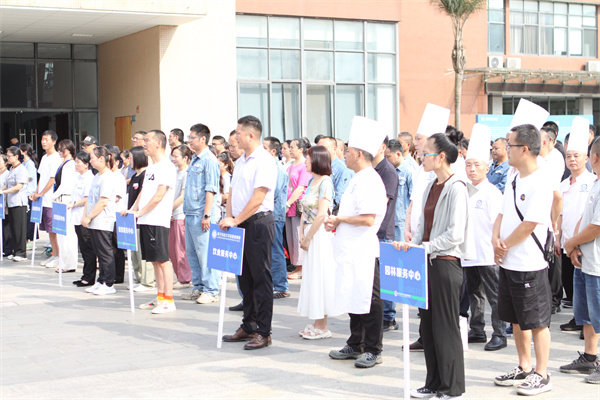即可将网页分享至朋友圈
BEIJING, June 1 (Xinhua) -- China has devoted growing resources to basic research and original innovation in recent years, in the hope of cultivating a driving force for economic growth and improving people's living standards.
The Chinese leadership has recently called for accelerated efforts to build China into a leader in science and technology, and achieve self-reliance and self-improvement in sci-tech at higher levels.
Chinese researchers, hi-tech enterprises and local governments are together actively striving to strengthen original innovation.
China's spending on basic research during the 14th Five-Year Plan period (2021-2025) will likely reach a record 8 percent of all research and development (R&D) expenditure, according to the Ministry of Science and Technology.
China's spending on basic research hit 133.6 billion yuan (about 20.4 billion U.S. dollars) in 2019, accounting for over 6 percent of total R&D expenditure. It is estimated that spending in 2020 exceeded 150 billion yuan.
TARGET INNOVATION FRONTIERS
Professor Deng Ning, vice director of Tsinghua University's hi-tech laboratory, has been making plans for an artificial intelligence (AI) research institution, which was initiated last October to explore the frontiers of AI research and make breakthroughs in key technologies.
He also participated in the establishment of the Beijing Academy of Quantum Information Sciences, an R&D institution initiated by the Beijing municipal government in 2017 and jointly built by many top academic institutions in Beijing.
The academy aims to be at the global forefront of quantum physics and quantum information science. Its superconducting quantum computing team made a major breakthrough in May, improving the decoherence time of superconducting qubits.
"We attach great importance to institutional innovation and high-level engineer and research team building. By taking a problem-oriented approach, we set up teams to overcome challenges," said Deng.
Professor Wang Zenghui from the Institute of Fundamental and Frontier Sciences at the University of Electronic Science and Technology of China is an expert on nanodevices and nanomaterials.
He said that science and technology development is the primary productive force, cultivation provides major talent resources, and innovation is a crucial driving force. The combination of the three can help achieve sci-tech self-reliance and self-improvement at higher levels.
INNOVATION APPLICATION
Initiated in 2013, Orbbec Technology is a leading company in 3D vision perception technology and has achieved many zero-to-one innovations.
Its founder and chairman Huang Yuanhao said 3D vision perception is a key and basic technology in the era of AI and the Internet of Things, involving core technologies such as imaging chips, computing chips and micro-nano optics. It is a bottleneck for the development of many other technologies and industries.
"We will work with research institutions and enterprises upstream and downstream to strengthen weak parts of our industry chains, and achieve breakthroughs in photosensitive chips, core algorithms, sensors and other key technologies," said Huang.
Zhou Shiying, vice director of the Intelligent Connected Vehicle Development Institute, affiliated to China FAW Group Corporation, said that as a terminal enterprise facing the market and users, the company should establish a sci-tech system and product development network for intelligent and connected vehicles, featuring multidisciplinary integration and innovation such as collaborative chips, AI and communication.
In this way, key and core technologies can help build independent industry and supply chains, Zhou added.
DEVELOPMENT ZONE
The Chinese leadership has also called for enhancing the overall efficacy of the national innovation system, calling on national laboratories, national scientific research institutions, high-caliber research-oriented universities and leading sci-tech enterprises to shoulder their responsibilities in the drive.
The reform of the sci-tech system has been highlighted to work toward a basic system supporting innovation in all aspects.
The combination of and concentration on basic research, innovation and industrial application are crucial to developing robust and innovative industries. The development zones built and managed by local governments have played an important role.
Optics Valley, or the East Lake High-tech Development Zone, in Wuhan of central China's Hubei Province, is well known for its optoelectronic industry chain which attracts global enterprises in the optical fiber, integrated chip and display screen fields.
"For more than 30 years, the development zone has been taking innovation as the key to success in its construction and development," said Wang Xiangwang, the development zone's Party chief.
Wang noted that the development zone plans to build the East Lake Science City, which will include five laboratories, nine large-scale scientific facilities and nine innovation centers. A world-class science city will be fully operational in the development zone in 2035, featuring robust innovation in science and technology. Enditem
报道链接:http://www.xinhuanet.com/english/2021-06/01/c_139982622.htm
编辑: / 审核:陈伟 / 发布:陈伟


